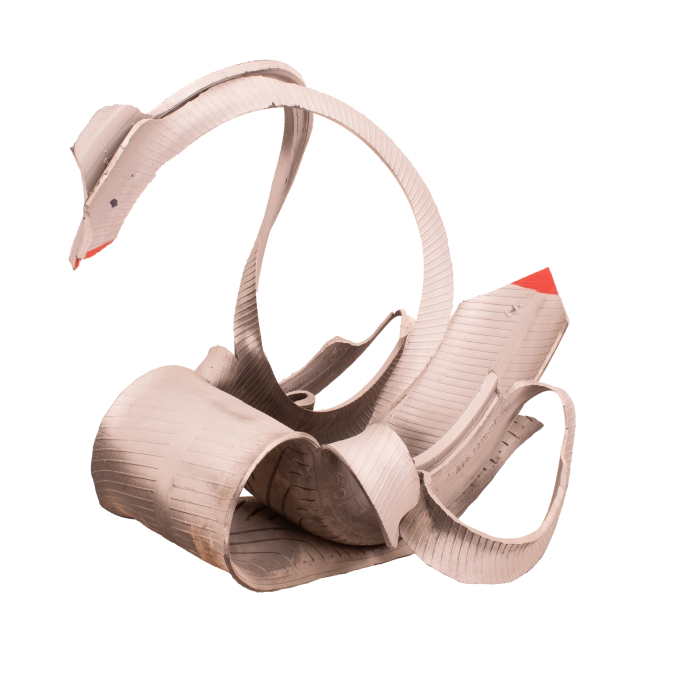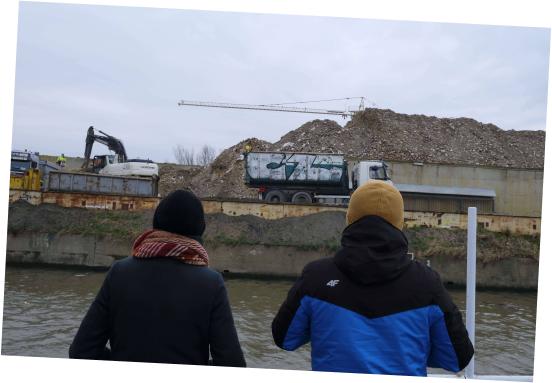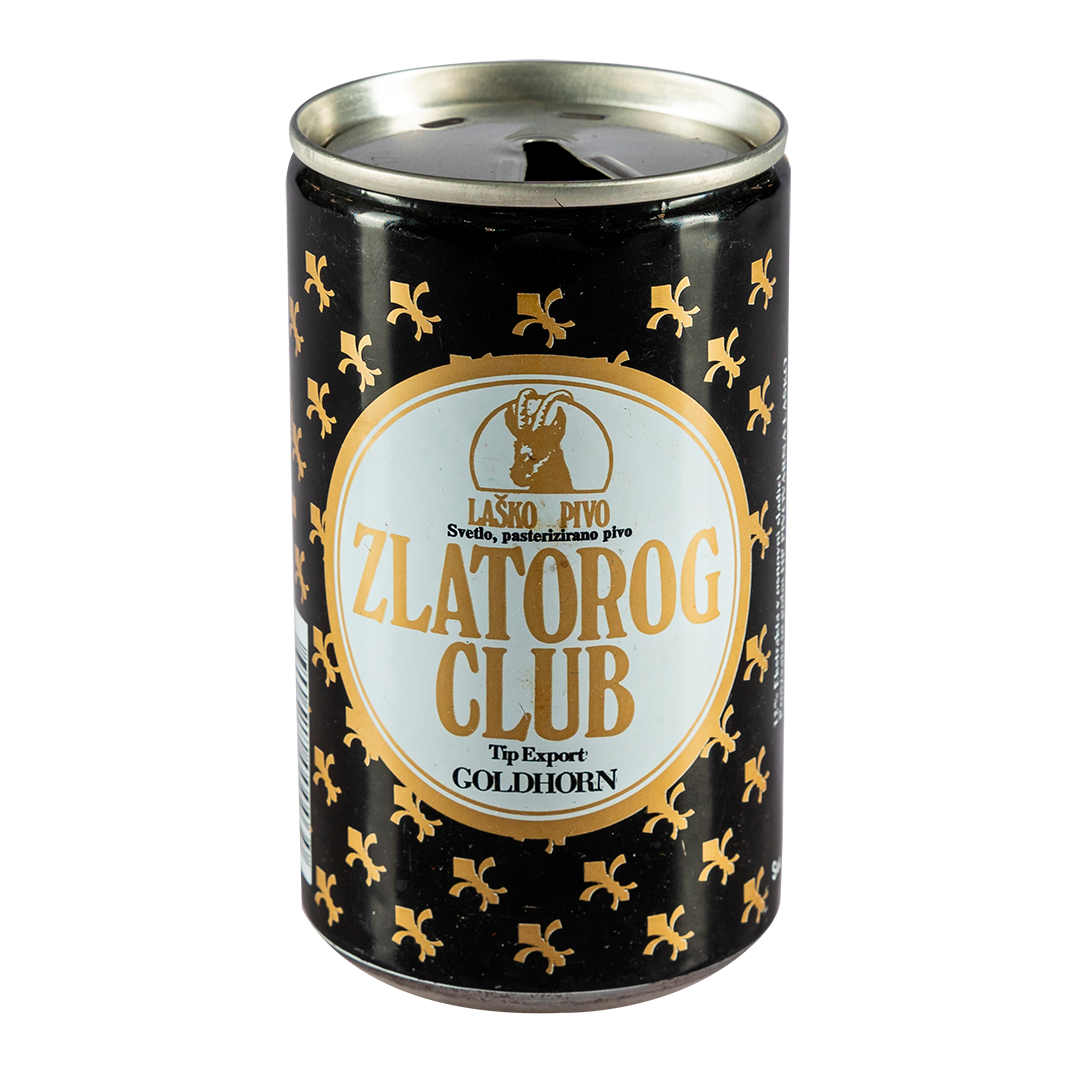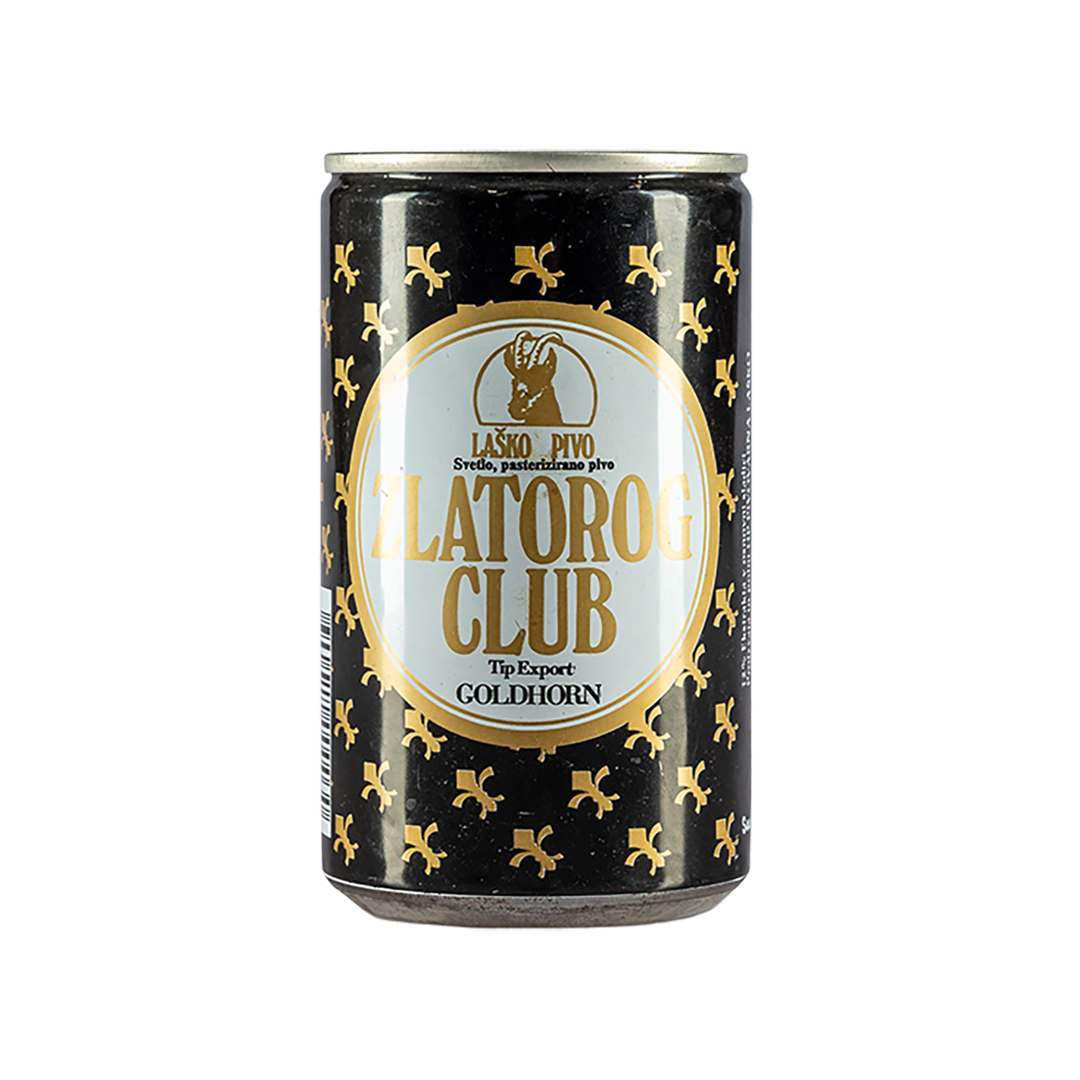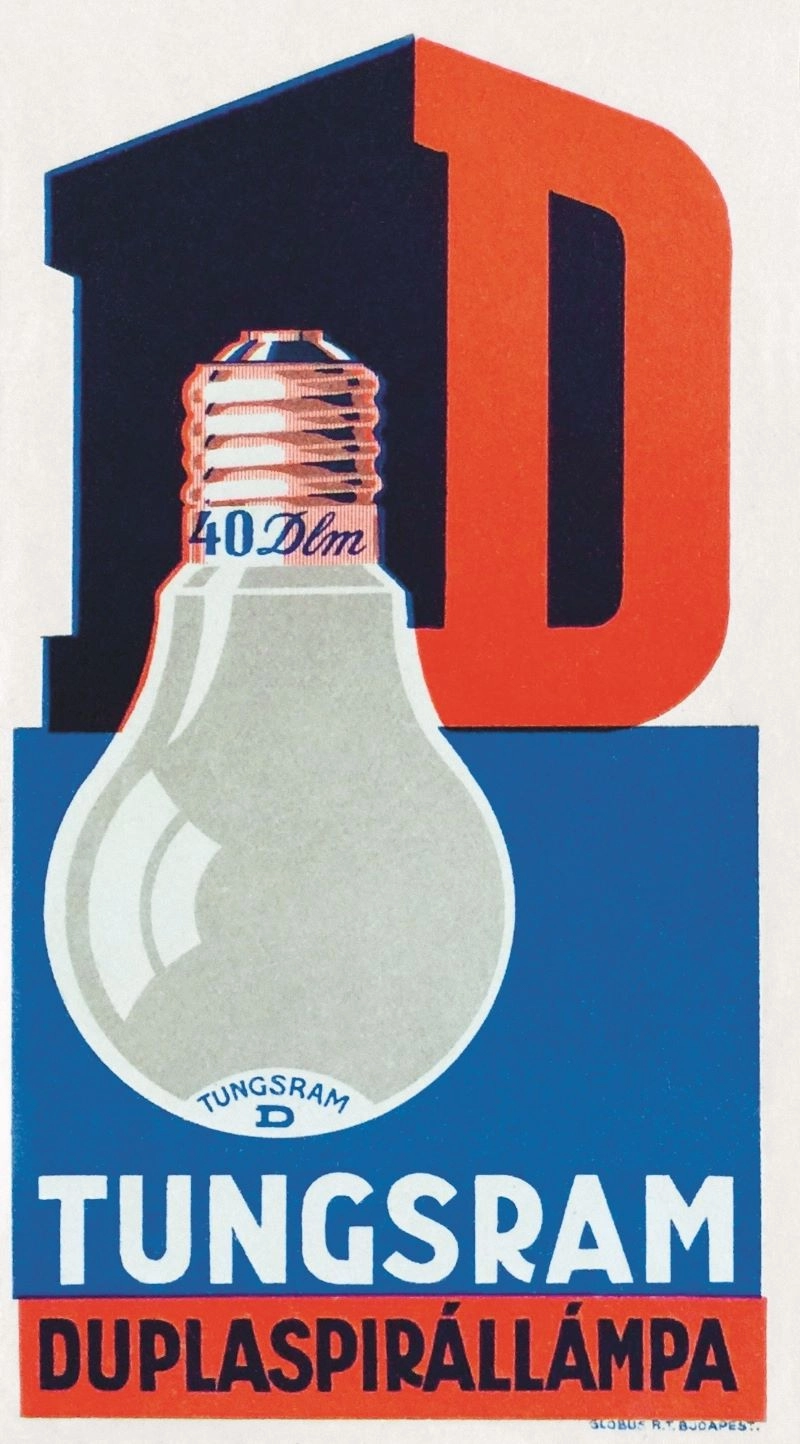Artist/Maker Pivovarna Laško
Date Production/Creation
1992
Entry in the museum collection
1997
Place of origin
Laško, Slovenia, Europe
Current location
Museum of Recent History Celje, Celje, Slovenia
Material
Sheet metal / machine made
Dimension
110x58 (diameter) mm
Inventory Number 745:CEL;S-9750a
Keyword Container Consumption Single use
Copyright Celje Museum of Recent History
Status In storage
Image Credit Matic Javornik
Witnessing the birth of a whole new category of waste.
What is this object about, who are the people behind it?
This Pivovarna Laško beer can dates back to the early 1990s, when mass consumption began to develop in Slovenia. Pivovarna Laško, which dates back to 1825, was the first brewery in Yugoslavia to can its beers. In 1985, it started selling Pivo Zlatorog in cans produced in Yugoslavia. Until then it had only sold beer in bottles. This was a major technological advance for the brewery, but for consumers it represented a shift from returnable glass bottles to single-use containers. This coincided with the transition from a society in which the range of products was limited to one characterised by huge choice, accessibility and consumerism.
What places is this object related to, how European/transnational is it?
In the 19th century Pivovarna Laško exported its beer to Trieste, Budapest and Vienna, as well as to distant countries such as Egypt and India. In Yugoslav times a large proportion of the brewery’s beer sales went to the Yugoslav market, but after the country disintegrated exports to other former Yugoslav republics fell sharply. It is clear from the fact that the writing on this Laško beer can is in Slovene that it was intended for sale in Slovenia.
Why and how did this object arrive in the museum’s collection?
The Laško Zlatorog Club beer can was a donation to the Museum of Recent History Celje. It is important for the museum’s collection not only because Pivovarna Laško was the first and largest brewery in Slovenia, with a tradition going back almost two hundred years, but also because it was based in the Celje region. At the same time, the can is a museum object that bears witness to daily life and drinking habits, and to the changes that occurred in people’s lives in the 1990s with the collapse of Yugoslavia, the changed market and the rapid development of mass consumption.
What is the relation of this object to waste?
The Laško beer can was produced in the years when Pivovarna Laško first switched from bottled beer to cans. Until the mid-1980s cans were rare in Slovenia, but they were extremely popular, especially among young people, who turned them into various useful and decorative objects and collected them. Once breweries started putting beer into cans, people no longer took the containers back to the shop, as they had done with bottles, but simply threw them away. Cans became so commonplace that, apart from a few exceptional ones, they lost any special value for collectors.

